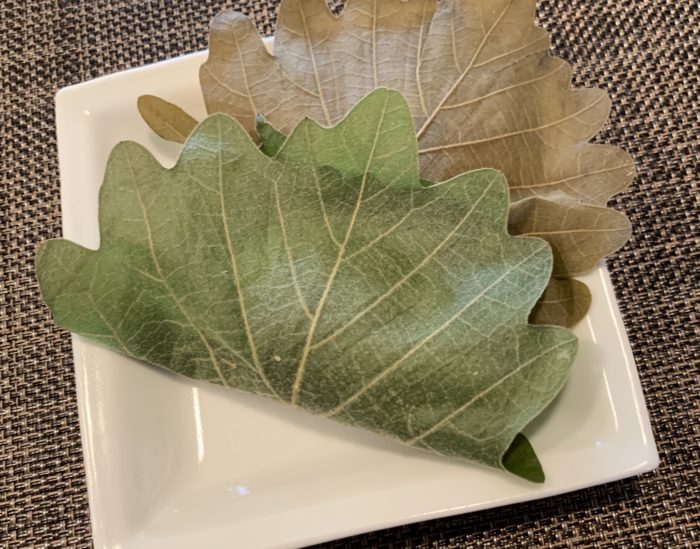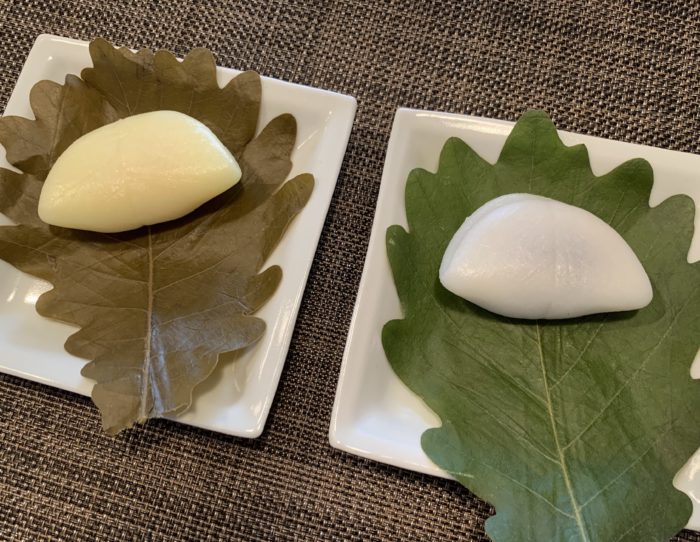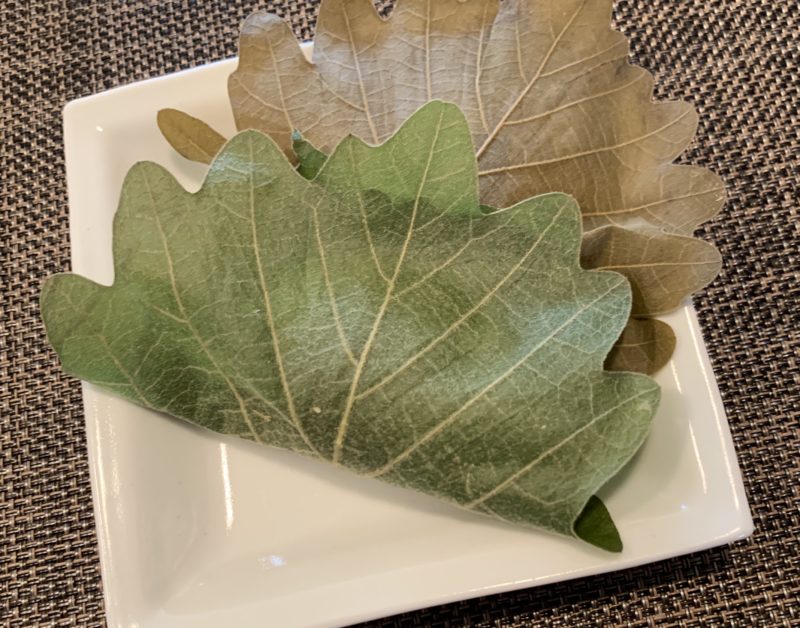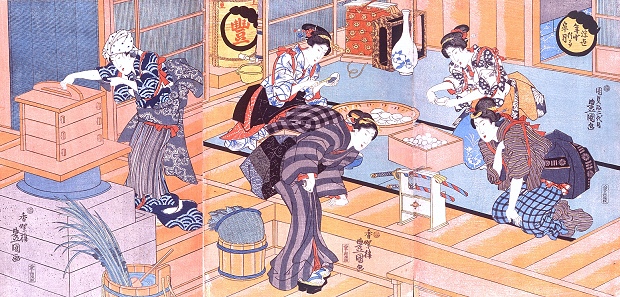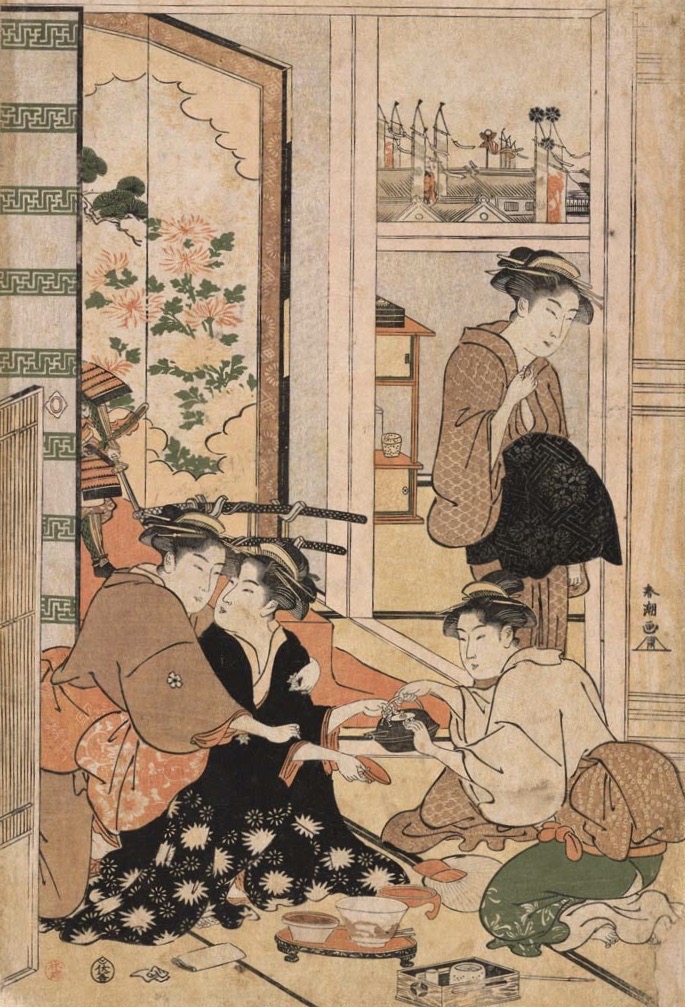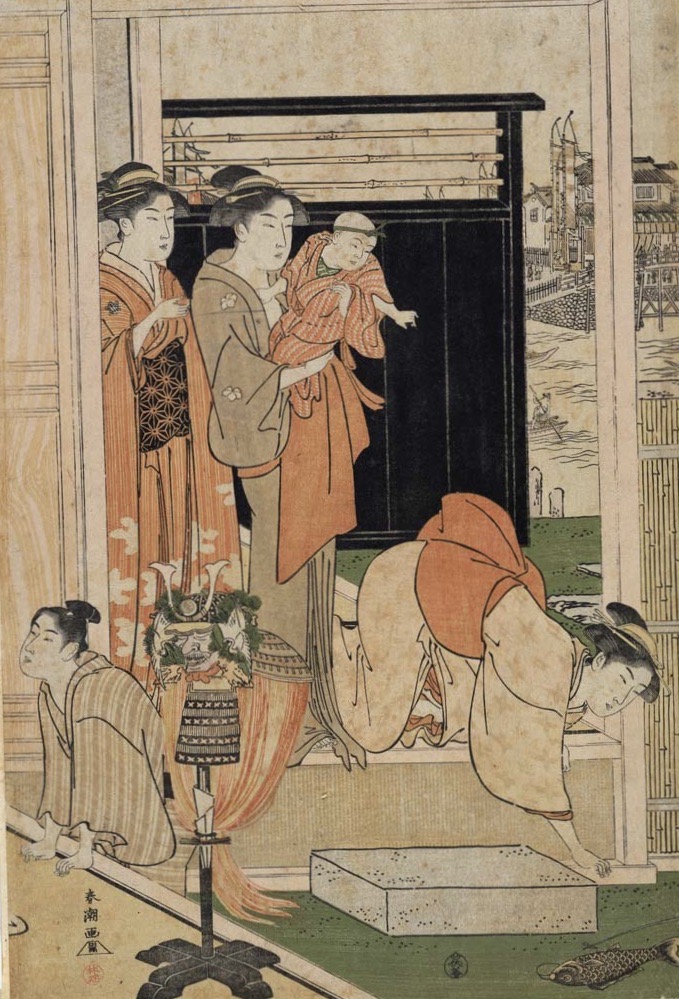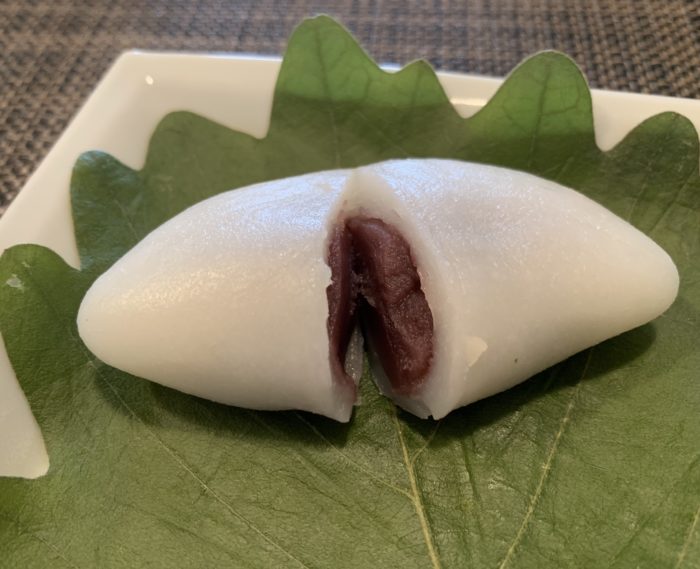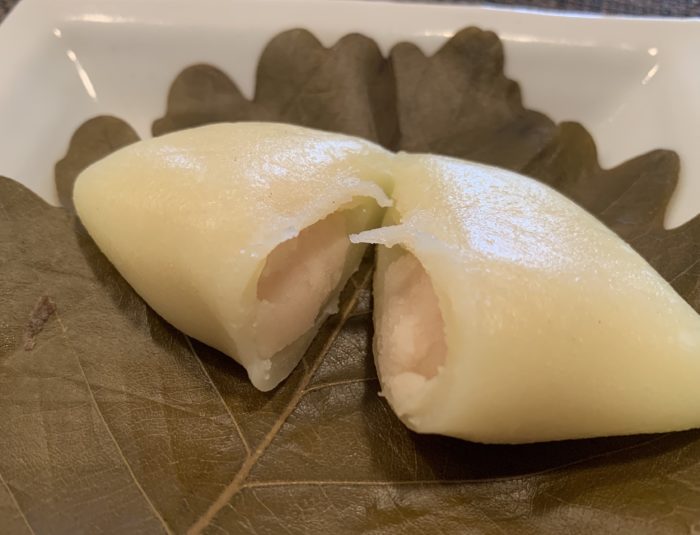May 5th is a national holiday in Japan called “Children’s Day”. Originally called “Tango no Sekku”(端午の節句), it was the festival day for boys. On the other hand, March 3rd is the festival day for girls. “Tango no Sekku” is an important time before planting rice. In the old days, women who participated in the event of planting rice cleaned themselves in a house covered with iris and yoshi. However, during the Edo period, when samurai reigned at the top of power, it became established as an event for samurai families living in the city.
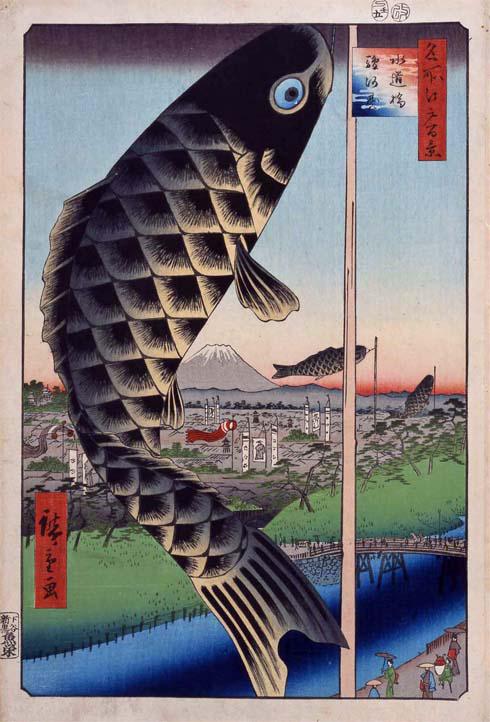
There are various events and meals, but the one that is still popular today is the “carp streamer,” which is the custom of decorating a carp-shaped windsock in the open air. The picture above is an ukiyo-e print of “Koi Nobori” drawn by Hiroshige Utagawa. This windsock is a variation of the windsock used by the samurai in the battlefield during the civil war, and you pray for the healthy growth of the boy.
Kashiwa-mochi has become an indispensable confectionery for the festival of boys, “Tango no Sekku”. It is a mochi or rice cake made by wrapping a mochi containing red bean paste in Kashiwa leaves.
Why are Kashiwano leaves used? There are various theories.
On Kashiwa, old leaves do not fall unless new shoots emerge. This was regarded as a symbol of family inheritance.
Kashiwa is considered a sacred tree and has been used for Shinto rituals.
Because it is thick, it is suitable for wrapping rice cakes.
The Ukiyo-e above depicts the “Tango no Sekku” event at a large merchant’s house during the Edo period. Women are busy steaming rice cakes, filling azuki bean paste, and making Kashiwa mochi. Swords are displayed beside the wife who exchanges greetings with the visitors, which symbolizes this event.
In the Ukiyo-e below, various items related to the event of “Tango no Sekku” are drawn. The picture on the right shows a samurai helmet and a windsock “Koi Nobori”. However, in the picture on the left, a young wife is surrounded by maids and drinking.
Looking at the two Ukiyo-e, it is the women who are enjoying this event.
Today’s Japanese sweets are Kashiwa-mochi for the event of “Tango no Sekku” from Rokkatei, a confectionery store in Hokkaido. The rice cake wrapped in green leaves contains red bean paste. The rice cake wrapped in brown leaves contains sweet white bean paste.
